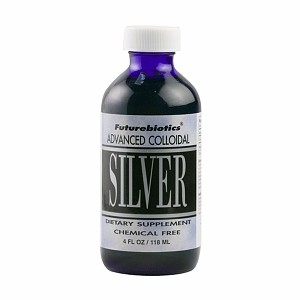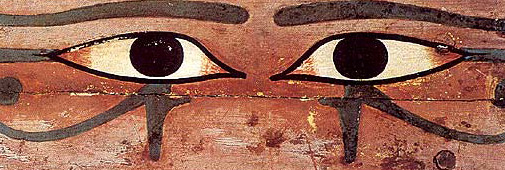As part of my new and improved schedule, I thought it’d be fun if I took some little known details about traditional mythology I’ve learned over the years and share them with everyone. These details can be curiosities, explanations for oddities in folklore, and even explanations for why people believe some of these things even into the modern day. A lot of this is stuff that I learned myself over the years researching my books and the things I could include within. So it’s only fair to spread the wealth of knowledge and share some of the more interesting details I’ve uncovered, since I wouldn’t have known either without that research.
I’m not saying that this will be entirely “new”. I’m not even saying that you’re not going to have some passing knowledge of everything here. But what I am willing to wager is that, even if you know the basic details, there are things involved in what I’m going to share that you just… didn’t know before.
Case in point is an oldie but goodie that people don’t really think about too hard and just accept at face value. For centuries we’ve all known that silver is supposed to strike down wicked forces and, if crafted into a bullet, could kill some cursed creatures such as werewolves. But how often do you stop to ask why that particular metal would do that? Why not something more valuable like gold or platinum? Why is it that this one metal above all others seems to be used more often than any other in protection from evil?
Some of you might know everything I’m about to share here. But, for the rest of you, I’d like to introduce you to the myths revolving around…
Silver
With indications that it has been mined and separated from lead as far back as the 4th Millennium BC, silver’s place in human civilization goes almost as far back as the concept of civilization itself. Since the beginning it was given special properties by the people who dug it up – standing out from other metals discovered at the time by its lustrous grey and white coloring which started it down the road to becoming the protective charm we know it as today.
One of the interesting aspects of silver in mythology is that it has roughly the same attributes today that it did when it first became important to human society. In fact, what is most fascinating about silver’s place in this mythology is that, while many contemporary ideas have fallen to wayside, there has been a lot of modern efforts to maintain the beliefs surrounding this one metal. Even gold, more valuable as a precious metal, has fewer stories in the modern day about its supposed mystical powers.
So, what exactly do people think it does and why?
The Myth
The first thing to understand is that silver is and has always been seen as a metal which wards off evil forces. Internally, this equates to illnesses and physical defects which the ancients (and some modern believers) believed to be caused by corruptions within the body by evil spirits. This has lead to people to using silver for healing – either in the form of amulets or as an actual ingredient in medicinal treatments.
This belief that silver has power over sickness was so prevalent that some people still believe it today without understanding why. To this day there are people who take a form of silver, known as colloidal silver, as a medicinal aid as part of New Age medicine. They do this to try to cure just about everything from chemical imbalances to arthritis. Some people have even taken so much of it that they’ve caused themselves to overdose on the substance and subsequently turn themselves, I kid you not, blue-grey.

This use of silver actually goes back as far as Ancient Greece and is almost entirely based in faith rather than any sort of clinical study. At one time, there was a common medical belief that silver presents antibiotic properties which meant it was often used in medicinal creams and instruments as a method of warding off infection. This practice was common up until the 1940s when more modern antibiotics became common place. Silver does have some impact on bacteria in lab tests, but the effectiveness is significantly below that of modern medicine. Despite this, many people still believe in the old practice and just as many articles online still support anecdotal evidence of its ability to cure all ills. Most places where you find this support are either legitimate believers of the old myths or people who have a profit motive to sell it to the unsuspecting.
But the more common beliefs, myths, and tropes surrounding the use of silver have to do with its effectiveness against external threats from forces of evil. Most famously, silver can be used in bullet form to kill werewolves, shape-shifters, and other creatures of the night. What a lot of people don’t realize is that, while the idea of silver stakes being effective on vampires is a more modern concept, silver’s effects even extended to that particular creature as well. In fact, two of the most commonly misunderstood myths about vampires have to do with their relationship to silver.
Many have long known that the image of a vampire is one that can’t be captured or seen indirectly. Vampires have no reflection in most myths and do not appear on film for photographs (or, in modern times, video either). The idea behind this has long been thought to be related to the fact they lack a soul, much like how Bart Simpson wasn’t detected by the automatic doors after selling his to Milhouse.

But the truth is, it was the silver. At the time when the myth first appeared, mirrors were still made by applying silver to the back of a glass pane – a process in use since the Greeks first did it with a mixture of silver and mercury. This also applies to photography, as silver began to be used early on in the development of film through the use of silver nitrates and silver halides (which are light sensitive). This practice continued right up to the advent of digital photography, which has since cut the use of silver by about 70% as of 2013. The old tale that it was because the Vampires had no souls was the symptom, rather than the cause.
But, that still leaves the question: why silver?
Why?
In the ancient times, especially during the rise of the concept of alchemy, materials found on Earth were said to be bound to aspects of astrology. This is especially apparent when you look at the alchemical symbols for materials such as gold, silver, and mercury to find they’re attached to symbols for various celestial objects. And the thing that really connects all the dots is when you look at one of the alchemical symbols for silver.
Already, it should be obvious why this is the metal of choice for taking out a werewolf. Written in many alchemy recipes as LVNA, silver has always been associated with the moon as much as gold has always been associated with the sun. Using the silver, an aspect of the moon itself, was much like fighting fire with fire. The bullet would essentially be piercing the wolf with the thing that gave it power to begin with, and this sort of thinking was fairly common in ancient times (and modern homeopathy, where they dilute poisons for similar reasons).
This is also, in part, why they have the values they have – the sun being a more powerful entity than the moon and thus having a higher value in day to day activities. But, where as gold rarely has a mystical nature today, the connection with the moon has a lot to do with all of the ideas associated with silver since these early times.
Starting with the Egyptians, the moon has often been associated with healing, protection through the night, and warding away dangerous beasts. Khonsu, the Egyptian god of the moon, was believed to protect all people who would travel at night, bring life to the land when the moon was at its fullest, and even bring about fertility in women. One of the most famous examples of Khonsu’s ability to heal would be through the story of Horus, where the sky god lost an eye in his battle with Seth, only to have the missing eye replaced completely by a piece of Khonsu. In fact, throughout many mythologies, you will find stories of missing body parts being replaced by pieces of silver or the moon (commonly eyes, as it was often believed in ancient times that the sun and the moon were two eyes of a single god).

Indirectly, this meant that silver, connected to the moon, was also connected to the moon gods which would be protecting against the forces of darkness or healing the people. This extended into Alchemy, as the belief was that alchemical reactions were dependent in large part on connecting terrestrial elements to astrological events. Thus, anything using silver had the mystical properties of the moon. This even extended into one of the bigger mistakes made by alchemy: ingesting mercury.
How Far It Goes
As I said before, silver was often used as a curative element in talismans or medicines with the belief that it was capable of purging corruptions from the body. But this belief also extended to what the ancients believed to be a related material: Mercury. Mercury, despite having its own alchemical symbol and its own associations within alchemy, was believed by the ancients to be simply liquid silver (as reflected by the original Greek name for the substance Hydrargyrum, “liquid silver”). This meant that the ancients and future alchemists would believe that Mercury was not only a transformational material (as it was a liquid metal, which you have to admit is just trippy), but a healing material as well.
So of course they put it in everything.
Mercury was believed to be one of the three basic elements which constituted the entirety of creation in alchemy, right next to Sulfur and Salt. And, because of this, and the belief it was a liquid aspect of the silver, mercury was included in such things as medicines, elixirs, potions and the long sought after panacea or elixir of life.
It was the belief back then that, if silver could purge evil from the body, mercury could purge all evil and also bring good elements in. Mercury was seen as a catalyst, after all, being neither a traditional liquid or solid in their eyes. It was often used as a middle ground between different elements and was thought to hold the secrets of things such as transmutation of lead into gold and even the creation of the legendary philosopher’s stone.

However, unlike the modern day, where mercury use in medicine is in the form of salts that are relatively inert, the ancient use of mercury was straight. This meant that many of the supposedly restorative cure-all recipes of ancient times were actually straight-up poison. But, seeing as mercury was believed to be connected to the wonderful cure-all of silver, they could never wrap their heads around the concept that the mercury was killing them.
Thankfully, in the modern day, we’ve abandoned use of mercury, but… if you ever happen to see a blue man on the street…
You’ll know why they did it to themselves.
(All of this was learned while researching my novels, where the creatures within follow slightly different explanations of the old myths. But hey, that’s part of the fun.)















